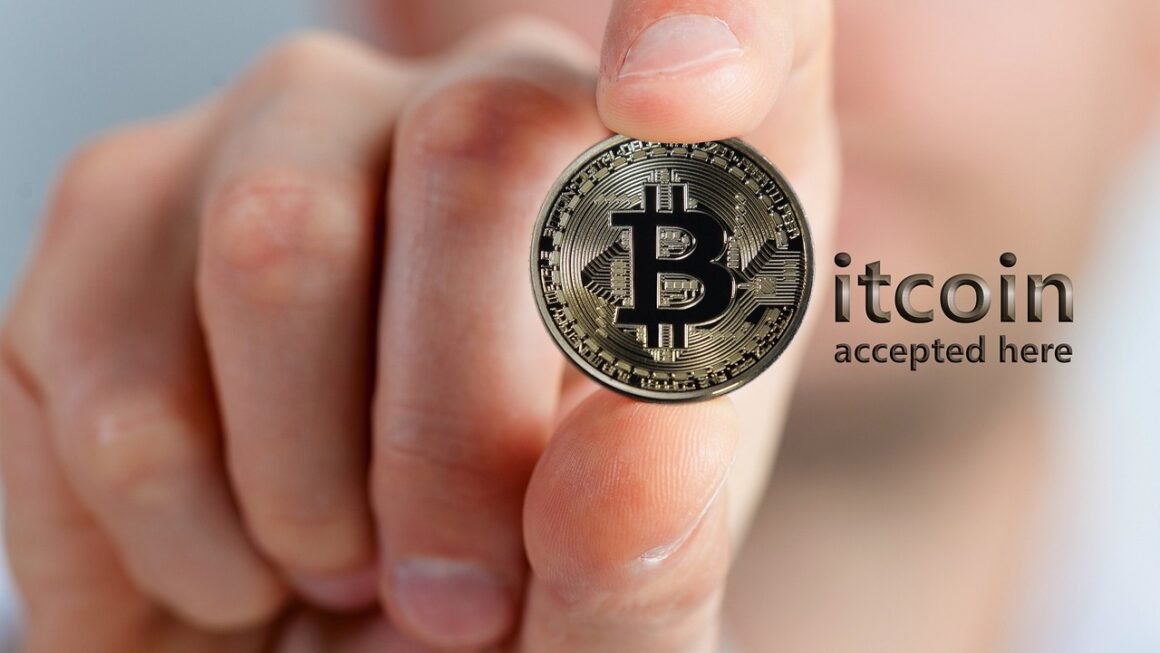Decentralized exchanges (DEXes) have revolutionized the cryptocurrency landscape, offering a permissionless and transparent alternative to traditional centralized exchanges (CEXes). By leveraging blockchain technology, DEXes enable users to trade digital assets directly with each other, eliminating the need for intermediaries and fostering greater financial autonomy. This blog post will delve into the intricacies of DEXes, exploring their mechanics, benefits, and potential impact on the future of finance.
Understanding Decentralized Exchanges (DEXes)
DEXes operate differently than centralized exchanges. Instead of relying on a central order book managed by a single entity, they utilize various protocols to facilitate trades directly between users’ wallets. This fundamental shift in architecture introduces a host of advantages and unique considerations.
What is a Decentralized Exchange?
A DEX is a peer-to-peer marketplace that allows users to trade cryptocurrencies without the need for a central authority. Transactions are executed directly on the blockchain, ensuring transparency and security. Here’s a breakdown of key aspects:
- Permissionless: Anyone with a crypto wallet can connect to a DEX and start trading.
- Non-custodial: Users retain control of their private keys and funds at all times.
- Transparent: All transactions are recorded on the blockchain, providing a public and immutable record.
- Global Accessibility: DEXes are typically accessible from anywhere in the world with an internet connection.
How DEXes Work: Automated Market Makers (AMMs) and Order Books
DEXes primarily function through two main mechanisms: Automated Market Makers (AMMs) and on-chain order books.
- Automated Market Makers (AMMs): AMMs are the most common type of DEX protocol. They utilize liquidity pools, where users deposit pairs of tokens, which are then used to facilitate trades based on a mathematical formula. Uniswap, SushiSwap, and PancakeSwap are prime examples of AMMs. The price of a token is determined by the ratio of tokens in the pool.
Liquidity Pools: These pools are essential to AMM functionality. Users providing liquidity to these pools earn fees from trades occurring within them. This incentivizes users to contribute their assets to the DEX, ensuring sufficient liquidity for traders.
Slippage: Slippage occurs when the price of an asset changes between the time a trade is initiated and when it is executed. AMMs are susceptible to slippage, especially for large trades, as the trade itself can impact the asset ratio within the liquidity pool.
- Order Book DEXes: These DEXes replicate the traditional order book model of centralized exchanges, but on the blockchain. Traders place buy and sell orders, which are matched when prices align. These types of DEXes often require more advanced infrastructure to handle the computational demands of on-chain order matching. Examples include Serum (built on Solana) and dYdX (which operates on StarkWare’s StarkEx layer-2 scaling solution).
Benefits of Using DEXes
Choosing a DEX over a centralized exchange offers several significant advantages, appealing to users who prioritize security, privacy, and control over their assets.
Increased Security
DEXes significantly reduce the risk of losing funds due to hacking or exchange failure because they are non-custodial. You always maintain control of your private keys.
- Reduced Counterparty Risk: No central entity controls your funds, eliminating the risk of exchange insolvency or mismanagement.
- Self-Custody: You are responsible for securing your own private keys, granting you complete control over your assets.
- Smart Contract Security: DEXes rely on smart contracts to automate trading. While smart contracts can be audited, there is always a risk of vulnerabilities. Choose DEXes that have been thoroughly audited by reputable firms.
Enhanced Privacy
DEXes generally require less personal information than centralized exchanges, making them attractive to privacy-conscious users.
- No KYC (Know Your Customer) Requirements: Many DEXes do not require users to provide personal identification, preserving a degree of anonymity.
- Wallet-Based Interaction: You interact with the DEX directly from your cryptocurrency wallet, further minimizing the need to share personal data.
- Pseudonymous Trading: Transactions are linked to your wallet address, which can be kept separate from your real-world identity.
Greater Control
DEXes empower users with complete control over their assets and trading decisions.
- Direct Access to Markets: You can trade directly with other users without intermediaries dictating terms.
- Transparency: You can verify all transactions on the blockchain, ensuring fairness and accountability.
- Permissionless Trading: You are not subject to account freezes or restrictions imposed by centralized entities.
Common DEX Platforms and Features
The decentralized exchange landscape is diverse, offering a range of platforms with unique features and functionalities. Understanding these differences is crucial for selecting the right DEX for your needs.
Popular DEX Platforms
Here are some of the most popular DEXes in the market:
- Uniswap: The leading AMM on Ethereum, known for its simplicity and ease of use. It uses the constant product formula (x*y=k) for price determination.
- SushiSwap: A fork of Uniswap that introduces the SUSHI token, which allows holders to participate in governance and earn a share of platform fees.
- PancakeSwap: The most popular DEX on Binance Smart Chain (BSC), offering lower transaction fees than Ethereum-based DEXes.
- Curve Finance: Designed for stablecoin swaps, minimizing slippage and maximizing capital efficiency for trading assets with similar values.
- Balancer: Allows for customizable liquidity pool compositions, enabling users to create pools with more than two assets.
Key Features to Consider
When choosing a DEX, consider the following features:
- Supported Tokens: Ensure the DEX supports the tokens you want to trade.
- Liquidity: Higher liquidity generally leads to lower slippage and better prices.
- Transaction Fees: Compare the fees charged by different DEXes, including gas fees (on Ethereum) or transaction fees (on other chains).
- User Interface (UI): Opt for a DEX with an intuitive and user-friendly interface.
- Security Audits: Verify that the DEX has undergone thorough security audits by reputable firms.
- Governance Token: Some DEXes have governance tokens that allow holders to participate in the platform’s decision-making process.
Example: Trading on Uniswap
Let’s say you want to trade ETH for DAI on Uniswap. Here’s a simplified step-by-step guide:
Risks and Challenges Associated with DEXes
While DEXes offer numerous advantages, they also come with certain risks and challenges that users should be aware of.
Smart Contract Vulnerabilities
Smart contracts are susceptible to bugs and vulnerabilities that could be exploited by malicious actors.
- Impermanent Loss: This is a risk specific to AMMs where the value of deposited assets can diverge from their initial value, resulting in a loss compared to simply holding the assets.
- Rug Pulls: Malicious projects can create fake tokens and liquidity pools, then drain the liquidity, leaving investors with worthless tokens.
- Flash Loan Attacks: Attackers can exploit vulnerabilities in smart contracts using flash loans, which are large uncollateralized loans that must be repaid within the same transaction.
Liquidity and Slippage
DEXes with low liquidity can experience high slippage, which can significantly impact the price you receive for your trades.
- Limited Liquidity: Some tokens may have limited liquidity on DEXes, making it difficult to execute large trades without significant slippage.
- Price Impact: Large trades can significantly impact the price of an asset on a DEX, especially if the liquidity pool is small.
- Front-Running: Bots can monitor pending transactions and execute trades ahead of them to profit from anticipated price movements.
Regulatory Uncertainty
The regulatory landscape for DEXes is still evolving, and there is a risk of future regulations that could impact their operation.
- KYC/AML Requirements: Regulators may impose KYC/AML (Know Your Customer/Anti-Money Laundering) requirements on DEXes, potentially undermining their privacy advantages.
- Security Laws: DEXes may be subject to securities laws if they offer tokens that are deemed to be securities.
- Jurisdictional Issues: The decentralized nature of DEXes makes it challenging to determine which jurisdiction’s laws apply to them.
The Future of Decentralized Exchanges
DEXes are poised to play an increasingly important role in the future of finance, as they continue to evolve and address their current challenges.
Innovations in DEX Technology
Ongoing research and development are focused on improving DEX performance, security, and user experience.
- Layer-2 Scaling Solutions: Solutions like Optimism, Arbitrum, and zkSync are being used to scale DEXes and reduce transaction fees.
- Order Book Improvements: New approaches to on-chain order books are emerging, offering greater efficiency and flexibility.
- Cross-Chain Interoperability: Protocols like Chainlink and Polkadot are enabling DEXes to trade assets across different blockchains.
Impact on DeFi and Traditional Finance
DEXes are driving innovation in decentralized finance (DeFi) and have the potential to disrupt traditional financial systems.
- Increased Financial Inclusion: DEXes provide access to financial services for individuals who are underserved by traditional institutions.
- Decentralized Lending and Borrowing: DEXes are facilitating the growth of decentralized lending and borrowing platforms.
- Tokenization of Assets: DEXes are enabling the tokenization of real-world assets, such as real estate and commodities, making them more accessible and liquid.
Conclusion
Decentralized exchanges offer a compelling alternative to centralized platforms, providing users with increased security, privacy, and control over their assets. While challenges remain, ongoing innovation and development are paving the way for a future where DEXes play a central role in the global financial ecosystem. By understanding the intricacies of DEXes, users can navigate this evolving landscape and leverage the benefits of decentralized trading. As with any emerging technology, it’s crucial to stay informed, exercise caution, and conduct thorough research before engaging with DEX platforms.



